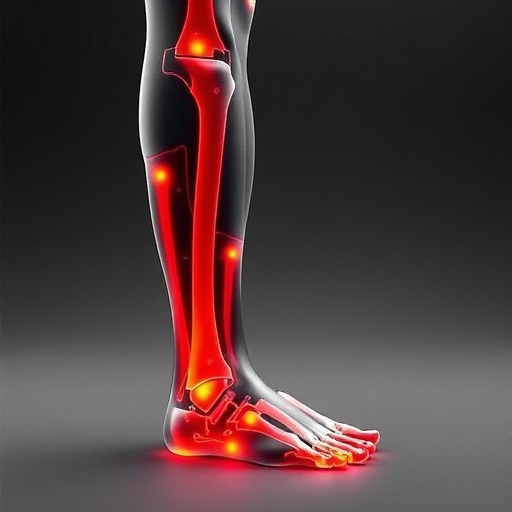In a groundbreaking study published in the journal BioMedical Engineering OnLine, researchers have delved deep into the interplay between depth data and upper limb impairment, revealing significant insights that could reshape the landscape of human pose estimation (HPE) technologies. This research addresses the urgent need for scalable and efficient systems capable of accurately tracking human movement, particularly in rehabilitation settings. The ability to deploy this innovative technology may hinge on how effectively depth data can enhance conventional monocular red-green-blue (RGB) models.
The researchers’ primary objective was to understand how the integration of depth data influences the performance of lightweight monocular RGB HPE models. This examination is critical, especially in rehabilitation, where accurate tracking can inform treatment strategies. To achieve this, they employed two HPE models: Dite-HRNet and MobileHumanPose. These models are notable for their capacity to conduct 2D and 3D HPE, respectively, making them suitable candidates for exploring the advantages of depth data in enhancing pose estimation capabilities.
In the study, depth data was employed using various fusion techniques. Early fusion, intermediate concatenation, and advanced fusion blocks were all assessed to see how these methods could effectively integrate RGB and depth data. In the realm of device limitations and performance requirements, finding the right fusion methodology can have considerable implications for future applications. The researchers selected RGB-D data for their experiments, which provided a more comprehensive dataset than the traditional RGB-only inputs.
The significance of the findings is underscored by the data sets used for training and testing the models. The study utilized renowned data sets such as CMU Panoptic and Human3.6M, alongside a custom data set incorporated specifically for this research. This custom data set consisted of RGB-D and optical motion capture data from a diverse group of participants, including both uninjured individuals and those recovering from stroke. This inclusion of individuals with physical impairments is particularly noteworthy, as it directly informs potential applications of HPE technology in clinical settings.
Results indicated that the early fusion method consistently outperformed others in minimizing the Mean per Joint Position Error (MPJPE) for both 2D and 3D HPE. This approach maintained comparable levels of Floating Point Operations (FLOPs) and frame rates to existing RGB-only models. Such efficiencies are paramount in real-time applications where speed and accuracy are critical. The implications are clear: a well-designed early fusion architecture allows for better accuracy without sacrificing computational performance.
An equally important aspect of the research was the comparative analysis between uninjured individuals and those with upper limb impairments. Surprisingly, the study found no significant differences in model accuracy across these groups. This demonstrates that HPE models can generalize effectively, opening the door for practical use in rehabilitative contexts. The results indicate that introducing depth data can enhance the robustness of these models, offering potential breakthroughs for therapy and assessment techniques.
The research has crucial implications for sensor selection in rehabilitation settings. By demonstrating that depth-enhanced HPE models can accurately track movement regardless of physical impairments, the study provides a foundation for developing customized rehabilitation technologies. Healthcare practitioners may soon have access to more precise data that can inform their methodology, ultimately guiding patients through tailored recovery plans.
As the healthcare landscape increasingly embraces technological advancements, this study emphasizes the importance of integrating multi-modal data in capturing human movement. The shift toward incorporating depth information is not merely an enhancement; it represents a transformative factor in how rehabilitation can leverage real-time data to optimize patient outcomes. These findings raise important considerations for designing future models that prioritize both accuracy and user compatibility.
Moreover, the research demonstrates a significant move towards improved data fusion strategies. The ability to seamlessly integrate RGB and depth data into a singular model underscores the ingenuity in adapting existing frameworks to meet contemporary challenges in human pose estimation. As the field advances, researchers and practitioners alike must grapple with the implications of these findings.
The future outlook for such technologies appears promising, especially as the intersection of artificial intelligence and healthcare continues to gain traction. This research lays the groundwork for subsequent studies aimed at refining HPE applications in diverse clinical settings. As these technologies see wider adoption, their potential to revolutionize rehabilitation practices cannot be understated.
In conclusion, this pioneering study underscores how incorporating depth data into lightweight monocular RGB human pose estimation models can enhance accuracy and efficiency, making a significant stride in rehabilitation technology. The findings highlight that physical impairments do not compromise the efficacy of these models, paving the way for innovative therapeutic solutions that leverage cutting-edge data integration techniques.
Subject of Research: The interplay between depth data and upper limb impairment in lightweight monocular RGB human pose estimation models.
Article Title: The effect of depth data and upper limb impairment on lightweight monocular RGB human pose estimation models
Article References:
Boudreault-Morales, GE., Marquez-Chin, C., Liu, X. et al. The effect of depth data and upper limb impairment on lightweight monocular RGB human pose estimation models.
BioMed Eng OnLine 24, 12 (2025). https://doi.org/10.1186/s12938-025-01347-y
Image Credits: Scienmag.com
DOI: https://doi.org/10.1186/s12938-025-01347-y
Keywords: depth data, human pose estimation, rehabilitation, RGB models, upper limb impairment, HPE models




